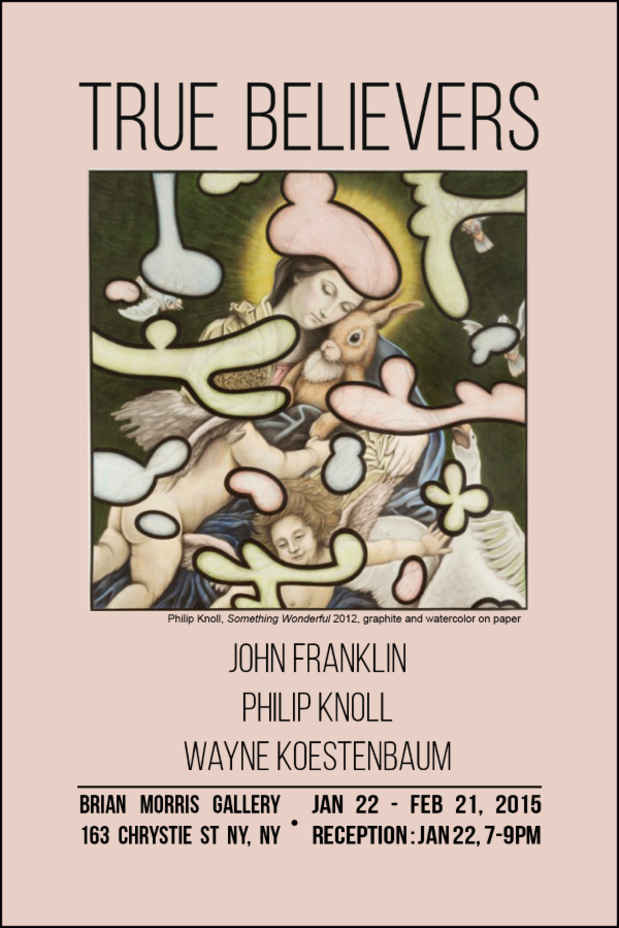“True Believers” Exhibition
Brian Morris Gallery

This event has ended.
Because eye and brain work together with such speed, often we find ourselves on the street, or in galleries, arcades, boardwalks, or backrooms, wholly vulnerable to what crosses our path, be it beauty or ugliness, banality or the exquisite, well before the rational mind can put this vision in perspective. That we don’t lose our balance attests to how normal it is for sight to grab us, how able we are to handle incoming photons as part of what being alive is. There’s plenty of time later to think about it, after all, if reflection has its way.
The writer Wayne Koestenbaum is also the painter Wayne Koestenbaum, and if his essays take us on trips through personal memory and cultural reflection, his paintings might be thought to share in a like methodology. It is a truism in writing that first sentences lead to second sentences, just as first paragraphs lead to second paragraphs; the printed word leaves only its linear track. But of painting can it be said that there’s a beginning, or an end? And if the viewer is never privy to how a picture is made?
Wayne’s wandering line & jumpy color lead us on, it’s true, his marks made in the confidence that accumulation itself will be its own reward. The viewer grabs on to any Koestenbaum detail, at any point in the largely abstract picture, and follows the quirky play of movement, collision, pile-up, color shifts, & matter-of-fact brushwork, around and around, the eye restlessly surveying the wondrous space.
Organized into variously colored dots on monochrome fields that suggest forever, John Franklin’s pictures are cosmic fictions, chastely cleansed to protect pleasure from being swallowed up in the gas of violent space. Painting is not a contact sport, even if we know the world to be a bumpy place. Rather, painting is a field of inquiry proposing alternate realities.
John Franklin’s work bubbles up from particular choices: precision-tuned design, elegant color, serene distribution of info (even if metaphorically unstable). His modernism is neither post, nor pre; his abstraction suggests, delights, enlarges. His colors stay where he puts them, even as the soup of his vision seems stirred by a very large spoon in a kitchen beyond human ken.
Philip Knoll’s been mining the instability of meaning’s terrain for twenty-five years, applying his sly wit and virtuosic drawing in the effort to wow, provoke, and entertain us. It might appear ghoulish, initially, to see him transform handsome matinee idol Rock Hudson into a heavy-browed werewolf with fangs, but isn’t that what the culture did to Rock, when it was clear he was dying of AIDS? He became the butt of endless jokes, homophobic, sheepish, mean-spirited. Knoll saw it happen, and remembers what American culture can do to a star.
To be out on a limb: is this the condition of love explored in “Niche”? Joined-at-the-hip monkeys, their long tails (like jungle vines) curled around branches for support, this couple has each other, sharing satisfaction and fate in the misty branches of a forest. How precarious is life in the wild? How important is love in the kitchen? Hold on for dear life!
Media
Schedule
from January 22, 2015 to February 28, 2015
Opening Reception on 2015-01-22 from 19:00 to 21:00